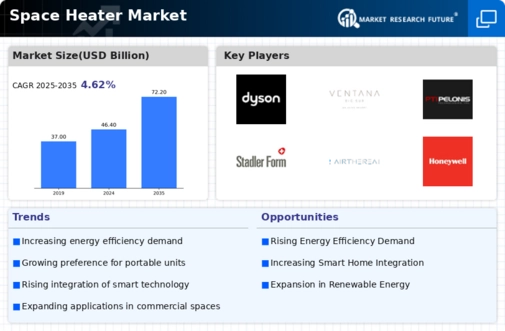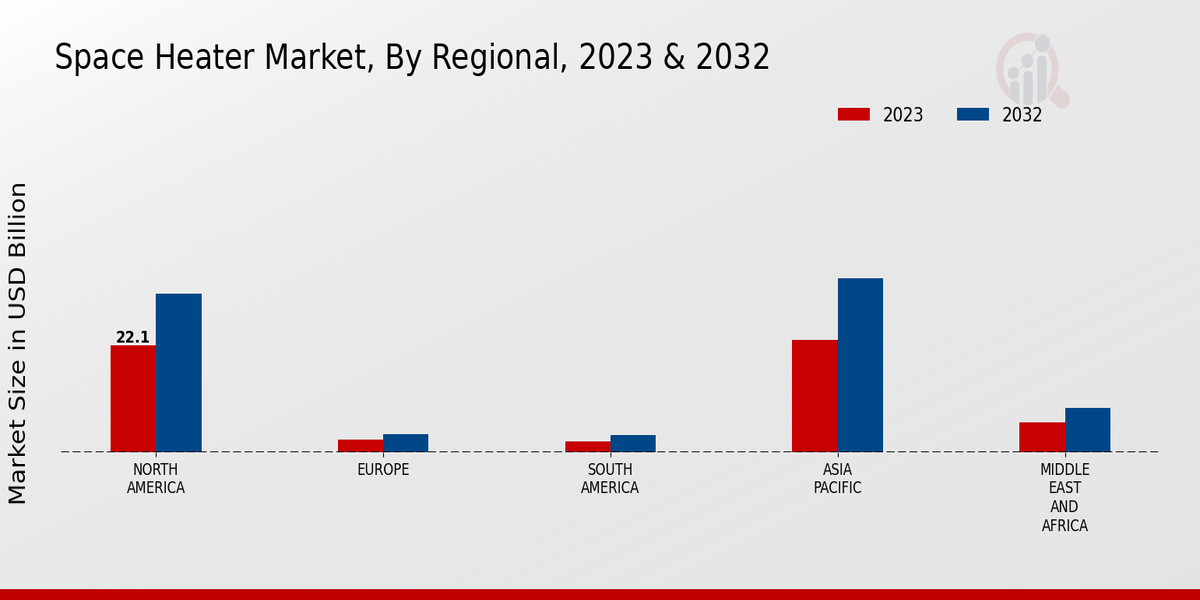Expansion of E-commerce Platforms
The Global Space Heater Market Industry is experiencing a transformation due to the expansion of e-commerce platforms. Online retail has become a significant channel for consumers to purchase space heaters, offering convenience and a wider range of options. This shift is particularly evident during seasonal peaks when demand surges. E-commerce platforms enable manufacturers to reach a broader audience, facilitating market penetration and increasing sales. As more consumers turn to online shopping for their heating needs, the market is expected to grow, reflecting changing consumer behaviors and preferences.
Rising Demand for Energy Efficiency
The Global Space Heater Market Industry is experiencing a notable shift towards energy-efficient heating solutions. As consumers become increasingly aware of energy consumption and its environmental impact, there is a growing preference for space heaters that offer better energy efficiency. This trend is supported by government initiatives promoting energy conservation, which encourage the adoption of energy-efficient appliances. For instance, energy-efficient models can reduce electricity bills significantly, appealing to cost-conscious consumers. The market is projected to reach 46.4 USD Billion in 2024, reflecting this rising demand for sustainable heating solutions.
Market Trends and Growth Projections
Growing Awareness of Indoor Air Quality
The Global Space Heater Market Industry is witnessing a heightened awareness regarding indoor air quality. Consumers are increasingly concerned about the impact of heating solutions on air quality, leading to a preference for space heaters that utilize advanced filtration systems or emit fewer pollutants. This trend is particularly relevant in urban areas where air quality issues are prevalent. Manufacturers are responding by developing products that not only provide warmth but also contribute to healthier indoor environments. As a result, the market is likely to see a shift towards these innovative solutions, enhancing its appeal to health-conscious consumers.
Increased Residential Construction Activities
The Global Space Heater Market Industry is benefiting from a surge in residential construction activities across various regions. As new homes are built, there is a corresponding demand for effective heating solutions, particularly in colder climates. Builders are increasingly incorporating space heaters into their designs to meet heating requirements and enhance comfort for homeowners. This trend is further supported by government incentives for energy-efficient building practices. Consequently, the market is poised for growth, with an anticipated compound annual growth rate of 4.11% from 2025 to 2035, driven by the ongoing construction boom.
Technological Advancements in Heating Solutions
Technological innovations are driving the Global Space Heater Market Industry forward. Manufacturers are integrating smart technologies into space heaters, allowing users to control their devices remotely via smartphones or smart home systems. Features such as programmable timers, temperature sensors, and energy monitoring capabilities enhance user convenience and efficiency. These advancements not only improve user experience but also contribute to energy savings. As consumers increasingly seek modern solutions, the market is likely to expand, with projections indicating a growth to 72.2 USD Billion by 2035, fueled by these technological enhancements.





















